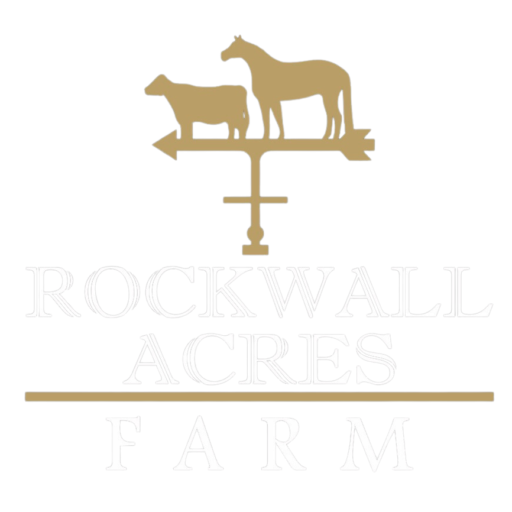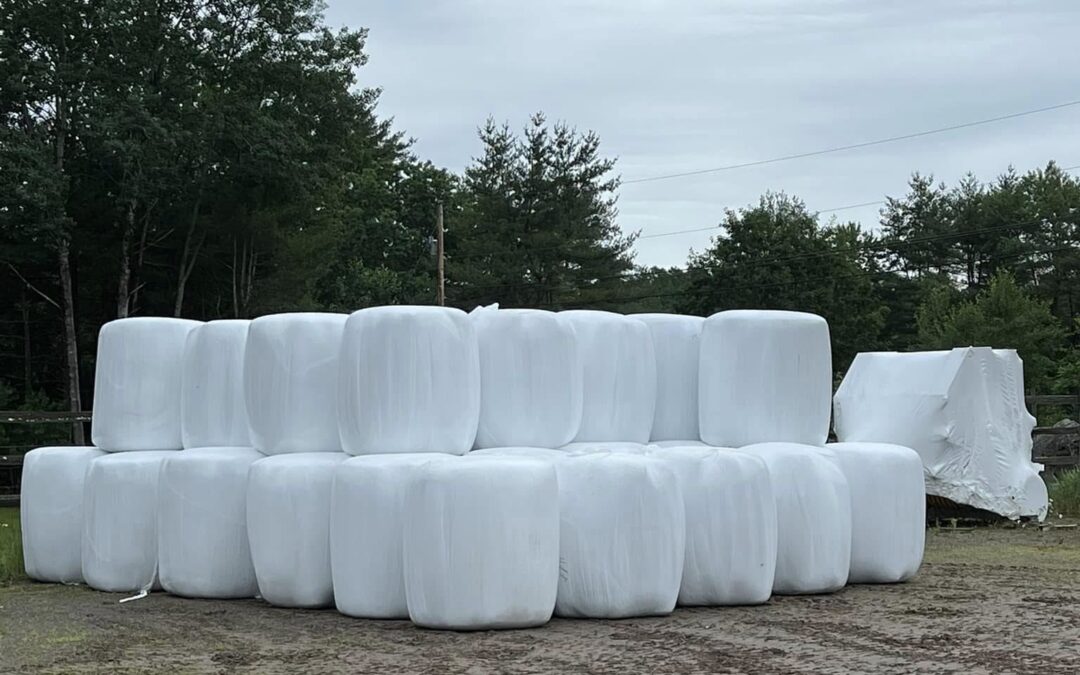Introduction to Round Bale Wrapping
Preserving the quality of forage is crucial for livestock farming, and wrapping round bales has become a cornerstone in achieving this goal. The wrapping process protects bales from spoilage, ensures their nutritional value is retained, and supports efficient storage. This guide will walk you through the essentials of round bale wrapping, its significance, and the best practices to follow in modern agricultural practices.
Why Wrapping Round Bales is Essential
Wrapping round bales is not just a practical solution but a necessity for maintaining high-quality forage. Here are some key reasons:
- Preventing Spoilage and Nutrient Loss: Exposed bales are prone to mold, rot, and nutrient degradation. Wrapping creates an airtight seal that protects against these issues.
- Protecting Against Weather Elements: Rain, snow, and UV exposure can compromise forage quality. Proper wrapping shields bales from these environmental factors.
- Enhancing Silage Fermentation: Wrapping creates the ideal anaerobic conditions for silage fermentation, which boosts the nutritional value of the forage.
Types of Wrapping Techniques
Different wrapping techniques cater to various needs and preferences. Here are the most common methods:
- Plastic Film Wrapping: A stretchable plastic film is used to tightly seal the bales, providing excellent protection against air and moisture.
- Net Wrapping: A quicker alternative that uses a net to hold the bale’s shape and provide some protection, though it may not fully shield against moisture.
- Twine Wrapping: A traditional method that uses twine to secure the bale. While cost-effective, it offers minimal protection compared to plastic and net wraps.
Each method has its pros and cons, and choosing the right technique depends on factors such as budget, storage conditions, and forage type.
Materials Used for Wrapping Round Bales
The choice of material significantly impacts the effectiveness of bale wrapping. Here are the common materials used:
- Stretch Film: Made of polyethylene, this film provides excellent elasticity and air-tight sealing. It’s the most popular choice for silage bales due to its durability and UV protection.
- Net Wrap: A mesh-like material that secures the bale’s shape and reduces wrapping time. However, it offers less protection against moisture compared to stretch film.
- Biodegradable Materials: These eco-friendly options are gaining popularity as they reduce environmental impact without compromising on performance.
Selecting the right material depends on your priorities, whether it’s cost-efficiency, environmental sustainability, or optimal forage preservation.
Steps to Wrap Round Bales Effectively
Achieving the best results with bale wrapping requires a methodical approach. Follow these steps:
- Prepare the Bales: Ensure bales are tightly packed and properly shaped to avoid gaps that can trap air.
- Choose the Right Equipment: Select a wrapper that suits your needs, whether it’s inline or individual wrapping.
- Start Wrapping: Use the chosen material to tightly wrap the bale, ensuring there are no loose ends or exposed areas. For plastic film, aim for 6-8 layers for optimal protection.
- Inspect the Wrapped Bale: Check for tears or gaps in the wrapping and repair them promptly to prevent spoilage.
Avoid common mistakes such as under-wrapping or using low-quality materials, as these can compromise the forage quality.
Equipment Needed for Round Bale Wrapping
Having the right equipment simplifies the wrapping process and ensures consistent results. Common types of equipment include:
- Inline Wrappers: Ideal for large-scale operations, these machines wrap multiple bales in a continuous row.
- Individual Wrappers: Best for smaller farms, these machines handle one bale at a time.
- Combi Wrappers: These combine the baling and wrapping process, saving time and effort.
Maintaining your equipment is equally important. Regularly inspect for wear and tear, clean moving parts, and ensure proper lubrication to extend the machinery’s lifespan.
Best Practices for Storage After Wrapping
Proper storage of wrapped bales is critical to prevent damage and ensure their longevity. Here are some best practices:
- Ideal Storage Conditions: Store bales on a well-drained surface to prevent water pooling and reduce the risk of contamination from soil.
- Positioning Bales: Arrange bales in a way that minimizes exposure to direct sunlight and extreme weather. Stack them with the flat side down for stability.
- Monitoring Wrapped Bales: Regularly inspect for damage, such as holes or tears in the wrapping, and repair them immediately to maintain the airtight seal.
Economic and Environmental Benefits of Bale Wrapping
Bale wrapping provides both economic and environmental advantages that make it a worthwhile investment:
- Cost-Effectiveness: By preserving forage quality, farmers can reduce feed costs and minimize waste.
- Reduced Wastage: Proper wrapping extends the shelf life of forage, ensuring that less material goes to waste.
- Environmental Benefits: Modern wrapping materials, including biodegradable options, help reduce the environmental impact associated with traditional methods of forage storage.
Common Challenges in Round Bale Wrapping
Despite its advantages, round bale wrapping can present some challenges. Here are the most common issues and how to address them:
- Plastic Tearing: Ensure the use of high-quality materials and inspect equipment for sharp edges that could tear the wrapping.
- Improper Sealing: Double-check for gaps or loose ends during the wrapping process to maintain an airtight seal.
- Weather-Related Challenges: Wrap bales in a sheltered area or during favorable weather to prevent moisture and dirt from compromising the process.
Innovations in Bale Wrapping Technology
The agriculture industry is continually evolving, and bale wrapping technology is no exception. Recent innovations include:
- Biodegradable Films: These environmentally friendly films decompose naturally, reducing waste and environmental impact.
- Automated Wrapping Machinery: Advanced machinery that increases efficiency by automating the wrapping process, ideal for high-volume operations.
- Smart Sensors: Devices that monitor wrapped bales’ condition, providing real-time data on temperature, moisture levels, and seal integrity.
These advancements not only improve the efficiency of bale wrapping but also ensure better forage quality and environmental sustainability.
Comparing Wrapped and Unwrapped Bales
Understanding the differences between wrapped and unwrapped bales can help farmers make informed decisions:
- Nutritional Quality: Wrapped bales retain more nutrients and have less spoilage, making them a superior choice for feeding livestock.
- Cost Implications: While the initial investment in wrapping materials and equipment is higher, the reduced wastage and longer shelf life of wrapped bales often outweigh the costs.
- Storage Longevity: Wrapped bales can be stored for months without significant loss in quality, whereas unwrapped bales are more susceptible to weather and pests.
Frequently Asked Questions About Round Bale Wrapping
- How long do wrapped bales last? Wrapped bales can last up to 12 months or more if properly sealed and stored under optimal conditions.
- What is the optimal wrapping technique for silage? Using plastic film wrapping with 6-8 layers ensures the best results for silage, as it provides an airtight seal for effective fermentation.
- Can you reuse wrapping materials? While most plastic films are single-use, some biodegradable wraps offer options for composting or eco-friendly disposal.
- What should I do if the wrapping gets damaged? Repair any tears or holes immediately using a high-quality patch tape to maintain the airtight environment.
- How many bales can be wrapped per roll of plastic film? This depends on the size of the bales and the number of layers applied, but typically one roll can wrap around 25-30 bales.
Conclusion
Wrapping round bales is an essential practice for preserving forage quality, reducing waste, and improving livestock nutrition. By selecting the right materials, equipment, and techniques, farmers can maximize the benefits of bale wrapping while minimizing costs and environmental impact. Innovations in wrapping technology continue to make the process more efficient and sustainable, ensuring a bright future for modern agriculture. Embracing these practices ensures that high-quality forage remains available year-round, contributing to healthier livestock and more productive farms.

